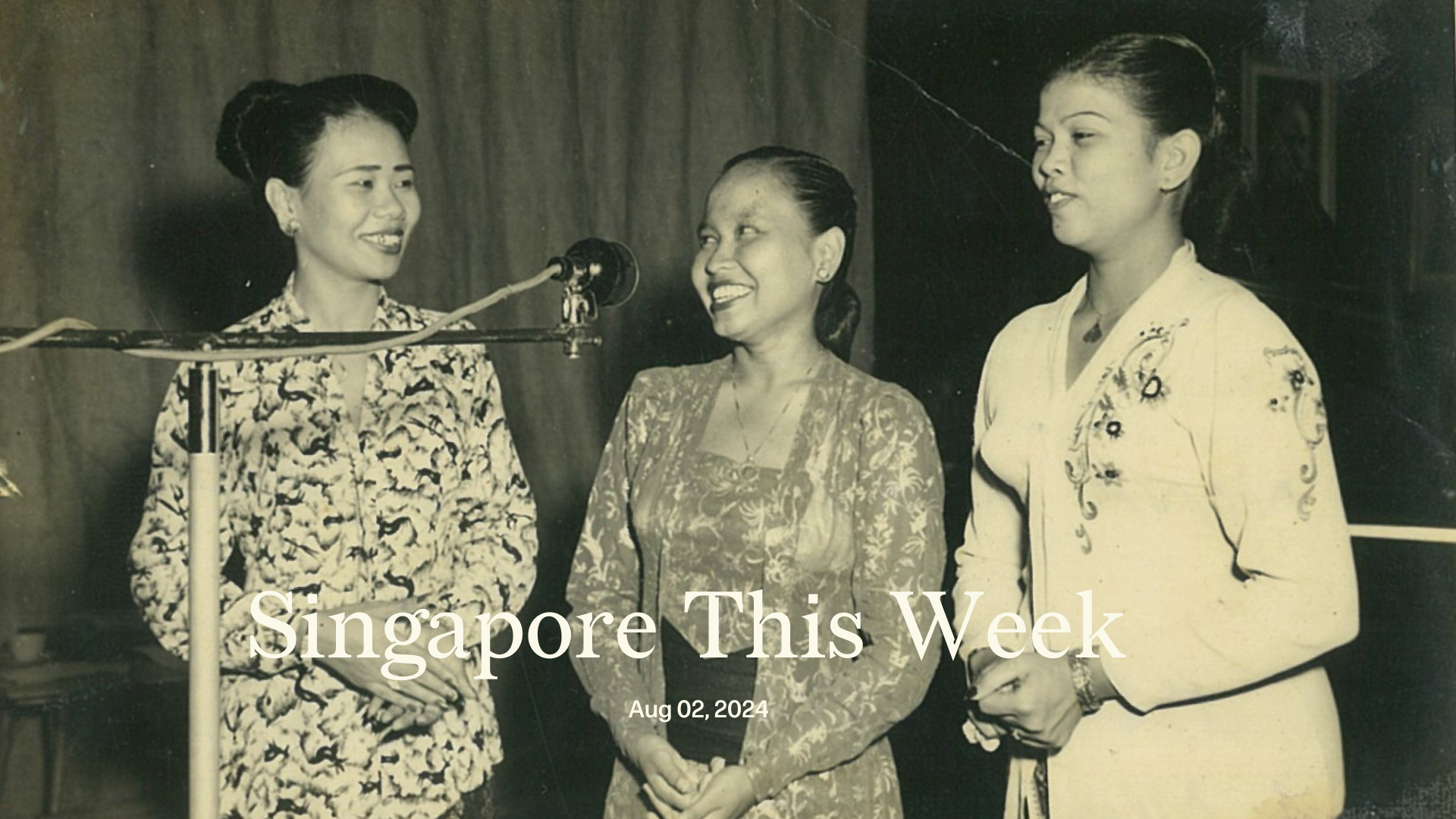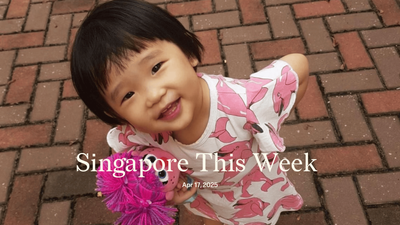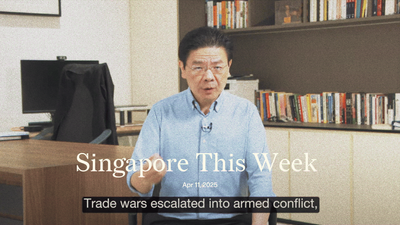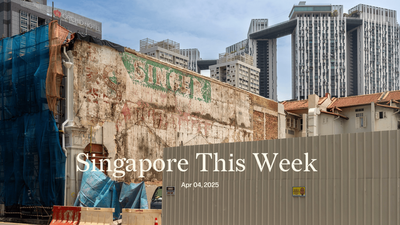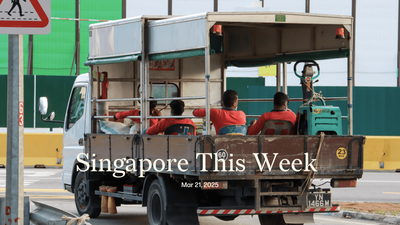Society: Doing the ‘dirty’ work
For decades, Singapore’s politicians have peddled the narrative that our people are simply too spoiled, too privileged, to want to work in specific industries, such as construction and domestic care. Lee Kuan Yew once railed that if we ever had an incompetent government, “our women will become maids in other people’s countries, foreign workers.” This tarnishing of specific forms of labour, and the smearing of Singaporeans’ motivations and work ethics, have provided the social and intellectual ballast for the smooth functioning of a pro-business market economy with gross socio-economic inequalities, what’s sometimes called “a first-world country with a third-world wage structure”. Singaporeans won’t do the work, so it goes, so that’s why we bring in low-cost migrant workers.
But that narrative has always felt hollow, particularly given the evidence in more egalitarian societies, such as around Scandinavia, where the pay and dignity afforded all forms of labour is more equalised. Surely Singaporeans aren’t some special privileged breed of human? Surely it’s simply a matter of better wages and working conditions? We now have evidence to support this. Last December, Westpoint Transit, a bus company, offered up to a S$5,000 monthly salary and a S$10,000 sign-on bonus for bus captains. Within a few weeks 1,292 people had applied. And this past week, Westpoint confirmed that it had received 1,478 applications, with 45 percent being Singaporeans or permanent residents. All 30 hires thus far are Singaporean, including five university graduates.
This suggests that the problem here isn’t so much Singaporeans’ work ethic and fussiness—but rather a dominant, neoliberal capitalist ideology that prioritises the interests of capital owners and the corporate elite over those of ordinary workers. So please, let’s stop the patronising rhetoric. And start figuring out a path to a more equitable society.
Society: To understand blackface and Lim Tean, the PAP must look in the mirror
The persistent racism and xenophobia in this “global city” never fail to shock. Last week, Raffles Institution (RI), one of Singapore’s elite schools, told its students that they could dress in traditional ethnic attire for Racial Harmony Day. And so (what seems like) an ethnic Chinese student donned the uniform of a delivery rider along with the face mask of an African-American basketballer. Perhaps he was prepping his dark-skinned classmates for the doldrums of Singapore’s grossly unequal, racially-stratified labour market.
Aaron Loh, RI’s principal, said that the student was merely riffing off “social media memes involving a basketballer”, and “had no intention to make fun of any group or community”, which simply confirmed that racial ignorance begins at the top. Confusingly, Loh also said that the student was “dressed inappropriately” and had been disciplined. This, along with the 2016 incident where boys and girls at RI wore blackface while holding posters of “Slumdog Millionaire”, cash and skin-whitening lotion, to celebrate their South Asian classmate’s birthday, points to deeper problems there.
Next up, the nativists. “The Girl In Your Roadside Poster Is Not A Singaporean,” screamed a post by Lim Tean, head of People’s Voice, the closest thing here to a right-wing, anti-immigration party. “[W]hy is a non-Singaporean being featured in a roadside poster celebrating our National Day?” Lim asked. The girl was the sole foreigner, alongside 18 citizens and one permanent resident, featured on individual banners in a National Day campaign. Singapore has “prostituted [itself] to foreigners” was one of many shrill xenophobic cries in response. All this prompted the poor girl to delete her original post showing herself next to her banner.
Alvin Tan, minister of state for culture, community and youth, predictably seized on the opportunity to ridicule an opposition politician and effectively present the ruling People’s Action Party (PAP) as the voice of reason. Not so fast, Tan. As Jom has argued before (including here and here), much of Singapore’s contemporary bigotry can trace its roots to the racist words and policies of Lee Kuan Yew and subsequent administrations. Current nativism, similarly, is partly the result of high immigration under Lee Hsien Loong, prime minister from 2004-24, allied with a failure to engage Singaporeans in an open, collaborative dialogue about the kind of society we want. The PAP’s ahistorical approach to tackling problems—papering over its past sins and instead blaming individual provocateurs—is disingenuous. So while black-faced Rafflesians and right-wing Lim Teans should be put in their place, so should the PAP.
Society: Are things wheelie looking up for bike-sharing in SG?
They’re hard to miss, those brightly coloured, inanimate, bi-wheeled creatures of the urban jungle. They’ve also been found just about everywhere—oftentimes forgotten, damaged and misplaced: at the void decks of public housing blocks; under bridges, in the middle of empty fields; at the bottom of canals, and even hanging from trees. And considering that half a dozen brands have arrived and departed the bike-sharing scene in Singapore since 2017, you may be hard-pressed to tell the difference between one company and the next. Anywheel, HelloRide, SG Bike, GBikes, Share Bike SG, Mobike, OBike, ofo, oh really?
It’s been a bumpy ride. At peak bike in 2018, there were some 200,000 shared bicycles. Like elsewhere, cash-flow and operational woes hobbled operators. Walter Theseira, economics professor, told CNA that fees are kept low to encourage use, which often leads to substantial operating costs. Stricter regulations such as new licensing requirements have also sapped resources. Today, only homegrown Anywheel and Alibaba-backed HelloRide remain, with a combined fleet of about 40,000 bicycles.
That the bike-sharing market in Singapore has persisted despite these setbacks, points perhaps to the demand for alternative forms of public transport. Htay Aung, Anywheel’s CEO, called the bike-sharing business a “sunrise industry”. This past week, Liu Thai Ker, “Singapore’s master urban planner”, said that he regretted not incorporating cycling paths into new town design. Planners used to think that “Singapore’s tropical climate…would be too hot for cycling.” He’s now changed his mind and thinks it’s still possible to do so.
The long-term success of the bike-sharing industry will be an essential factor towards achieving Singapore’s Green Plan 2030, all part of advancing the national agenda on sustainable development. The Covid-19 pandemic ramped up the population’s interest in cycling. Now, it’ll take creativity, financial resolve and a keener understanding of user needs and behaviour to keep the momentum going. Theseira added that “explicit” government or commercial support—public or corporate subsidies—is required to make bike-sharing systems work, which usually means “a city-approved monopoly to reduce duplication and increase utilisation”. This could give companies the breathing space to focus on improving their services and the wider infrastructure: ultimately offering better and broader coverage; more rental methods; fleet upgrades; and fewer missing and damaged bicycles. It may not guarantee a significantly increased ridership, but it’ll give urbanites more reasons to hop on a shared bike and incorporate cycling into their daily step count.
History weekly by Faris Joraimi
How shall I recount Nona Asiah? The newspapers have written her biography: she passed away in the early hours of Tuesday morning, at 94. Her life was dazzling and prolific; she was a star of Malayan music, among the ranks of Saloma, Normadiah and Zahara Agus. By all accounts a woman of great style, Asiah was also an important link in a chain of teaching: Zubir Said and P Ramlee were her mentors, while she helped nurture a generation of well-known Singaporean TV and radio personalities, from Rilla Melati to Khairudin Samsudin. This is one way to celebrate a life: in the language of the obituary. But its listing of milestones doesn’t get to the little detours, the softer ways a life ripples into others’. I first met “Mak Nona”, as she was affectionately known, at my grandmother’s funeral in 2015. They were both fellow playback singers for the movies. I overheard her lamenting, “Sekarang semua dah tak ada”, how there were fewer of the artists from her generation as the years went by. I can only imagine what it’s like to slowly lose the friends with whom you shared creative purpose, even if Asiah insisted in interviews that they all did it to survive. I don’t think the toil meant they never felt any pride or delight in their work.
There’s a sharp black-and-white photograph of her and my grandma from 1952, at the HMV recording studio in Singapore. They’re standing in front of a microphone, smiling to each other under an intense glare that imparts a touch of Hollywood to the scene. Their hair is pulled back taut, tied into buns; they each wear simple earrings, necklaces and patterned kebayas. They look neat, not a crease to be seen nor hair out of place; but also relaxed, sharing a polite laugh, as if we’re intruding into some industry gossip making its way round the studios right before a recording session begins. I’ll never know what their friendship was like, or what they were talking about in that photo. After my grandma passed, Asiah was one of the few people I could ask to know more about her beyond family lore and public archives. I kept putting it off, reluctant to burden an elderly woman with a stranger’s questions. There will always be things we wish we got to ask, things from our past we can no longer retrieve. But we’ll always have Nona’s voice to listen to. It already communicates so much.
Arts: Jalan Besar, mimpi besar
“I was feeling very, very lonely in Singapore,” AK Zilani glances off camera for a moment, then gazes back at the lens. “I [didn’t] have anything here except working and send back money to home.” In an earnest 10-minute documentary by filmmaker Benny Loh, migrant workers describe what it takes to build a home in an unforgiving and unfamiliar nation-state—and also what it takes to build a community from the disparate groups of transient workers here. “LIMINAL Space” is one of 27 micro-documentaries that Loh has worked on over the past decade. It takes Jalan Besar as a point of embarkation, a colourful and concentrated “arrival city” for Singapore’s South Asian migrant workers. In Arrival City: How the Largest Migration in History is Reshaping Our World (2010), journalist Doug Saunders writes about how these transitional sites—ones that facilitate business relationships, economic transactions and social security—give new arrivals “a purchase, however fragile, on the edge of the larger society, and to give them a place to push themselves...further into the centre, into acceptability, into connectedness”. This isn’t the first time Jalan Besar has formed the backdrop for artistic interventions seeking to educate the Singaporean public about the country’s migrant worker demographic. In 2021, OH! Open House presented one of their popular art walks in the neighbourhood, subtitled “Refuge for Strangers”. One of the featured works was Min-Wei Ting’s “Hampshire Road”, where the artist-filmmaker surveils a tightly-controlled bus depot, one built as part of the state’s draconian response to the 2013 Little India riots.
Zilani, who’s from Bangladesh, is one of the documentary’s protagonists, and he’s enthusiastic about how ground-up arts platforms, such as the annual Migrant Cultural Show and Birds Migrant Theatre, have become intermediary spaces for migrant workers to connect with each other, and with the broader local community previously inaccessible to them. The theatre group’s productions—tightly rehearsed in-between their stars’ full-time jobs—have been well-reviewed and reflect both the triumphs and the challenges of thriving as a migrant to Singapore. Zilani himself is an “arrival city” of sorts, acting as an intermediary between newcomers and longer-term immigrants. He’s now co-organiser of the cultural show, founded in 2018, and has observed how prior to these activities many of his peers were much more isolated from each other. “Our aim was to bring all these bubbles together,” he says. But it’s also on us to step out of our bubble, and into theirs.
Tech: The symbiotic relationship between Micron and Singapore
It’s a multi-billion-dollar, multinational semiconductor company listed on the NASDAQ, a leading global manufacturer of dynamic random-access memory (DRAM) and NAND flash memory cards. (You know the important stuff that goes into everyday electronic devices like computers, servers and mobile phones, and used to store priceless memories in digital and video cameras.) And it chose Singapore to manufacture almost all of its NAND memory products, which generated over 30 percent of Micron Technology’s latest quarterly revenue, or roughly US$2.1bn (S$2.8bn). But how did Singapore end up playing such a big role in a global semiconductor giant’s production chain?
Diplomacy and skills—the soft- and hardware. “Singapore is home to a global pool of top talent, enabling us to attract diverse and highly-skilled talent,” said Chen Kok Sing, Micron VP and Singapore Country Manager. And Micron, he added, “enjoys a long and successful partnership with the Singapore government”, with both parties sharing a common goal to “grow and create opportunities for local talent and promote a favourable environment for the semiconductor industry.” Since taking over Texas Instruments’s global memory business here in 1998, Micron has expanded its presence in the city-state. It has invested over US$30bn (S$40.6bn) and hired 9,000 employees across four wafer fabs and several advanced facilities.
The company credits the talent ecosystem in Singapore, which, over several decades, has grown alongside its local manufacturing and semiconductor industries. Universities and polytechnics have been especially reliable producers of STEM talent with electrical engineering competencies. Micron’s gargantuan presence has consequently given Singapore a (relatively large) 10 percent share of the high-end global memory market. But even as Singapore is starting at a position of strength, said Alvin Tan, also minister of state for trade and industry, the country should not take this for granted. It must “ride this momentum” and continue growing its semiconductor industry and “maintain our edge and secure our share of the growing pie.” How else will Singapore birth more unicorns in the semiconductor industry, such as the United Test and Assembly Centre which was founded by Inderjit Singh, former member of parliament with the PAP, and is now valued at over S$2bn.
Tech: Will Singapore go nuclear?
Having just signed the civil nuclear cooperation agreement, or 123 Agreement, with the US, it seems pertinent to ask (again) whether Singapore is considering nuclear energy as it explores ways to decarbonise its power sector. But any answer to this question remains cloudy for now as the PAP government remains undecided about whether to deploy nuclear energy.
Parties to the 123 agreement, which includes South-east Asian neighbours Indonesia, the Philippines and Vietnam, get increased access to information and technological expertise from civil nuclear experts in the US. This will bolster Singapore’s pool of knowledge in this area—there are also plans to train 100 nuclear energy experts. The 123 agreement is part of the US’s Atomic Energy Act that regulates nuclear exports from North America. The question of whether to go nuclear has become increasingly pertinent in Singapore given the rising pressures of sustainable energy consumption and sources. A 2022 report by the Energy Market Authority suggested that nuclear energy could provide roughly 10 percent of Singapore’s energy consumption. Yet, past industrial disasters, such as in Chernobyl in 1986 and Fukushima in 2011, are a reminder of the tremendous safety risks that come with nuclear deployment. That said, Singapore’s as good a bet as any for nuclear, with our stellar reputation for safety and process, alongside our relative insulation from natural disasters.
Singapore’s recent developments in nuclear cooperation underscores the intricate balance between technological advancements, energy policies, and international relations within the nuclear energy domain. It also highlights the city-state’s cautious yet progressive approach in navigating the complexities of nuclear energy exploration. The tradeoffs are complex given the safety, sustainability and economic imperatives at stake. And it’s time worth taking before pushing this button.
If you enjoy Jom’s work, do get a paid subscription today to support independent journalism in Singapore.


